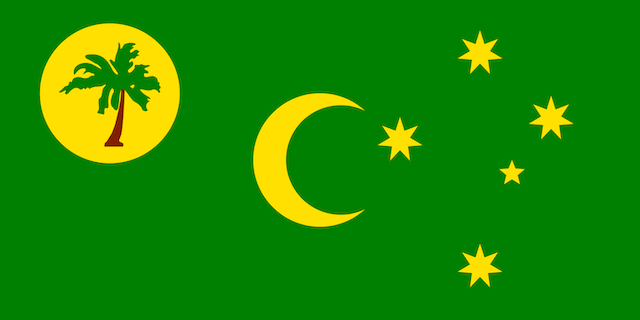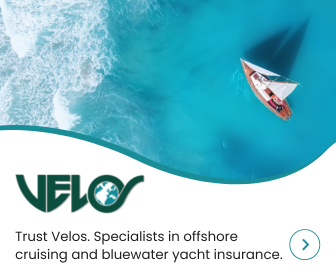Cocos (Keeling) Islands - Bio-Security
Cocos (Keeling) Biosecurity
The Cocos (Keeling) Islands are an Australian external territory. All visiting yachts will need to meet Australia’s biosecurity requirements (under the Biosecurity Act) if planning to visit here on their Indian ocean crossing.
Pre-Arrival Procedures
All non-commercial vessels arriving in Australian territory must submit a pre-arrival report (PAR) using the Department of Agriculture, Fisheries and Forestry’s web-based portal. The PAR must be submitted 90 days to 12 hours before arriving in Australian territory.
Declare all items
All personal food, plant and animal items must be declared on the Incoming Passenger Card. AFP or Biosecurity may inspect your galley stores and other biosecurity items to ensure that they do not include prohibited goods or items infested with insects or disease.
Treatable goods may be treated and returned to you. Prohibited goods will be confiscated, bonded on the vessel for the duration of your stay, or re-exported at the owner’s expense.
If you declare prohibited items, you may be given the option of re-exporting them. If
you do not declare items of biosecurity concern, a substantial on-the-spot fine could
be imposed or you could be prosecuted.
There are NO waste disposal facilities available to manage the biosecurity risk associated with organic and non-organic waste generated by for disposing of waste or garbage in Cocos (Keeling) Islands. All waste must be securely contained on board the yacht for the duration of your visit.
There are substantial fines for leaving any rubbish or waste on any of the islands.
Last updated: August 2025
If you have information for this section, or feedback on businesses used, please let us know at editor@noonsite.com. We also welcome new information about businesses you have used (see Related Businesses).
Next Section: Formalities: Documents
Related to following destinations: Cocos Keeling
Country Navigation
Courtesy Flag Discounts


YachtFlags.com provides high quality courtesy flags that are manufactured in durable Knitted Polyester fabric. Knitted so that the fabric itself does not deteriorate in the constant movement that marine flags are usually exposed to, and polyester so that the flag does not weaken in the strong UV-light usually found in the main sailing areas of the world.
YachtFlags.com offers a discount to Noonsite members.
Use the coupon code NOONSITE-5A2B when checking out to get 10% off today.
Buy Now On YachtFlags.comMain Ports - Cocos (Keeling) Islands
Courtesy Flag Discounts



YachtFlags.com provides high quality courtesy flags that are manufactured in durable Knitted Polyester fabric. Knitted so that the fabric itself does not deteriorate in the constant movement that marine flags are usually exposed to, and polyester so that the flag does not weaken in the strong UV-light usually found in the main sailing areas of the world.
YachtFlags.com offers a discount to Noonsite members.
Use the coupon code NOONSITE-5A2B when checking out to get 10% off today.
Buy Now On YachtFlags.comFormalities
Courtesy Flag Discounts



YachtFlags.com provides high quality courtesy flags that are manufactured in durable Knitted Polyester fabric. Knitted so that the fabric itself does not deteriorate in the constant movement that marine flags are usually exposed to, and polyester so that the flag does not weaken in the strong UV-light usually found in the main sailing areas of the world.
YachtFlags.com offers a discount to Noonsite members.
Use the coupon code NOONSITE-5A2B when checking out to get 10% off today.
Buy Now On YachtFlags.com




Feedback received from the World ARC Team in September/October 2025:
The Ferry Service – When we were there we didn’t have or hear of any issues with the ferry, we took it from West to Home Island and back to West Island and quite a few participants took it between Direction and Home/West Island without any problems. It’s cheap particularly for Cocos and compared with hiring a water taxi, air-conditioned and convenient.
The Water Taxi costs $100 pp each way between Home Island and Direction Island, regardless of how many people go in one trip. It’s a tiny motor boat which would fit a maximum of three to four people and can be a wet and uncomfortable ride.
Fuel wasn’t available on Home Island – jerry cans had to be taken over to West Island and then Tony from Salty’s Café facilitated a water taxi to bring them back as full jerry cans are not allowed on the ferry.
Local activities and events may affect the opening hours of shops on Home Island so check with the locals if you can.
Rachael
World Cruising Club
Now Covid travel restrictions are lifting we are starting to plan our exit from Australia and were very much hoping to stop via Cocos Keeling. This makes for a predictable weather window to travel the first big hop to cross the Indian Ocean. Noon site suggests that permission is granted on a ‘case-by-case basis’ – but I just posted an application and it was declined. Application forms are setup to expect you to fly in and out from WA, but I completed them anyway and added comments to clarify our situation.
Has anyone managed to get an approval?
Any thoughts? Tips?
Hi MaryAnne, thanks for the question. I’ve made contact with the Authorities in Cocos and will let you know what they come back with.
Following as we are in similar situation.
Posted on behalf of Paul Stephens aboard s/v Tin Tin:
Getting to West island to clear in/out was less easy especially as there was no consensus on the ferry timetable. I have since laminated one and attached to the notice board. There is a ferry from Direction to Home island on Saturday a.m. at 10:00 but the connections don’t really work to get back again.
So it’s best to dinghy the 1.5nm to Home island giving the chance if the last ferry back from West island at 16:00. Ferry is AU $3.50 single or $5.00 return. The bus meets the ferry for $0.50… everything shuts at 15:00 on Saturday and there was no cafe or bar open. The Community Centre was helpful with Wi-Fi, and the shop reasonably stocked.
Using broadband radar over-layed on the Navionics Gold electronic charts, we found that the chart was precisely accurate. There is an error in the positioning of the entrance waypoint on the plan of Direction Island in the Indian Ocean Crossing Guide.
The plan shows the waypoint to be at the seaward end of the leading lines to West Island but, when plotted, it is 0.28M east of the leading lines. The waypoint is still a perfectly safe place to head for, although the boat will be closer to the land than the plan suggests.
In September 2015 there is now buoyage (unlit) to help you into the anchorage: From the IO Crossing Guide waypoint, head S and then SE towards the first tall post with a red can top. Leave that post to port and then turn towards the anchorage. If you have good light, you’ll see a band of reef ahead of you.
Identify the smaller post with a green triangle on top as this marks the area of deeper water over the reef. Keep the post close on your starboard side. We found the depths to be either equal to or more than those marked on the Navionics Gold chart. There are lots of small reefs in the anchorage but they are all deep until close inshore.
Anchor west of the jetty to keep out of the ferry/recreation zone.